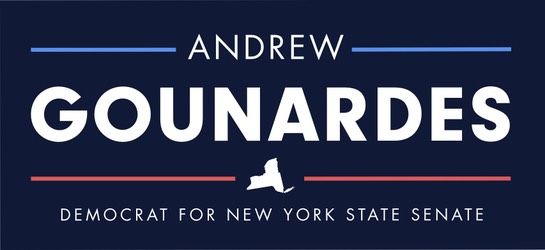|
Dear Friends,
It’s been a long few days up in Albany but we are finally done passing this year's state budget.
It was a difficult budget negotiation, but I’m proud that as a result of our work, many of the priorities you sent me to Albany to fight for are being addressed. I wanted to share with you some of the highlights that made it in, plus a few things that didn’t.
But first, it's important to explain that the legislature is not a co-equal partner in the budget process. Unlike what we may learn in 4th grade social studies about Congress and the federal budget, our state constitution places explicit control of the budget process in the hands of the Governor. The legislature negotiates in good faith to shape the final budget, but at the end of the day, the governor still holds most of the leverage over the final product.
Without further ado, here’s a snapshot of what’s in and out of the budget:
Education The legislature fought back against the Governor’s proposal to cut school funding, with a commitment to study the existing school funding formula. Also, at the Governor’s insistence, we extended mayoral control for two additional years, and changed the process to select the chairperson of the Panel for Educational Policy to force the mayor to choose from candidates nominated by the Senate, Assembly, and Board of Regents. Excitingly, we are also funding a study to examine the feasibility of implementing a system of universal afterschool.
Higher Education Ninety percent of high school seniors who complete the FAFSA go on to enroll in higher education, versus fifty-five percent who don’t. What’s worse, last year New York students left $200 million of unused financial aid on the table simply by not completing the FAFSA. This year’s budget includes my proposal to ensure all students complete the FAFSA form, virtually guaranteeing that if they want to pursue college, they’ll be able to. The budget also increases the minimum Tuition Assistance Program (TAP) award from $500 to $1,000, the first increase since 2000. We also secured a $60 million increase in operating aid for SUNY and a $40 million increase for CUNY.
Housing This was the hardest part of the budget to negotiate, and with good reason: the housing crisis is a multifaceted problem that requires multiple solutions to address. This year’s budget includes incentives to build deeply affordable housing as well as significant protections for tenants from unjustified evictions. These good cause protections will help countless tenants stay in their homes. We also committed $1 billion in capital funds to construct new housing across the state. Our work to address the housing crisis is far from over, and I’m committed to doing more in the future, including passing my Faith-Based Affordable Housing Act.
Healthcare In a big win, this year’s budget eliminates co-pays for insulin so it remains accessible and affordable for all who need it. We also committed $3 billion to help stabilize safety net hospitals and, importantly for Brooklyn, fought back against the plan to close SUNY Downstate and put together a plan to ensure the long-term viability of this critical healthcare institution.
Small Business The budget includes stronger tools for law enforcement to address retail theft, help small businesses afford investments in safety, and, crucially, gives authority to local governments to shut down illegal cannabis shops while also investing in strengthening the legal cannabis marketplace.
Supporting Working Families Unfortunately, despite the support of nearly 100 organizations across the state, my Working Families Tax Credit was not included in this year’s budget. However, the budget does include a one-time supplemental boost to the Empire State Child Tax Credit, which will translate to a roughly $350 million boost to families who qualify for the credit. I am not giving up on the Working Families Tax Credit, because economists and poverty experts agree that it is one of the best tools we could enact to lift up working-class and middle-class families.
Technology The enacted budget creates Empire AI, a major new research initiative leveraging our institutions of higher education to develop safe and responsible uses of artificial intelligence. It also ensures protections against bad uses of AI by banning non-consensual deep fakes, requiring disclosure of AI generated content in political advertising, and expanding protections against sexually-explicit AI content. Despite strong support from Governor Hochul, the final budget does not include my SAFE for Kids Act to protect kids’ mental health and personal privacy on social media. This was a big disappointment, but with several months left in the legislative session, I am not giving up this fight. If you care about this issue, please join our efforts here.
Street Safety Lastly, the budget includes Sammy’s Law! This common sense bill would allow New York City to set its own speed limits instead of needing to come to Albany for permission. There’s no reason why my colleagues from all across the state should have more say New York City’s speed limits than New York City does.
There’s still a lot left for us to debate and get done in Albany this year. If you have any questions about the budget process or specific things that I didn’t cover here, just let me know! Whether it’s questions regarding my work in Albany or our community work in Brooklyn, I always want to hear from you.
All the best, Andrew |
|
|
|
Andrew for New York 725 70th Street, Apt C1 Brooklyn, New York 11228
If you believe you received this message in error or wish to no longer receive email from us, you can unsubscribe at any time by clicking here to unsubscribe. |
